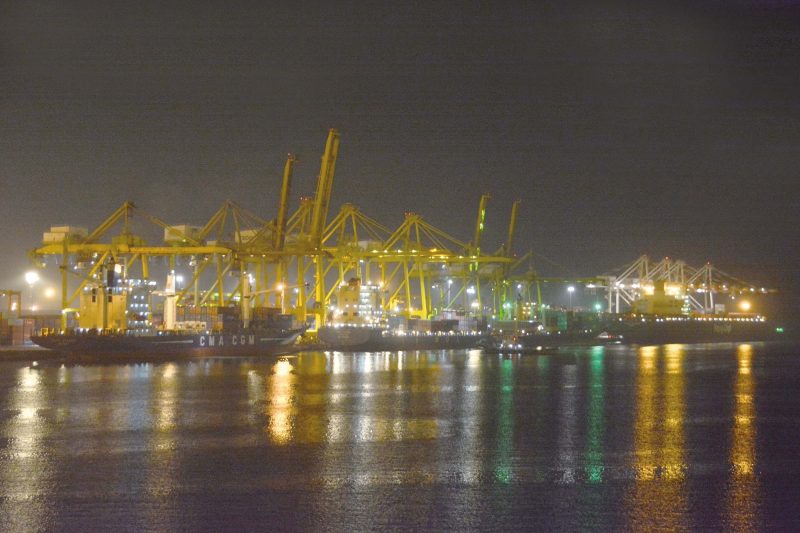
The new port of Laem Chabang (Cape Chabang) lies on the south eastern shore of the Gulf of Thailand around fifty nautical miles from the entrance to the slowly meandering Chao Phraya (Menam) river leading to the Port of Bangkok by sea, and around one hundred miles by road. It lies on Pattaya Bay to the north of Pattaya City with its tourist beaches and night life, and to the south of Chon Buri. It began operating in 1991 to take over some of the overflow port traffic of the Port of Bangkok, which was unable to take the larger draft ships, and it has since grown into one of the largest container ports in the world. The Port of Bangkok was known as Khlong Toei Port on the river Chao Phraya after its major reconstruction in 1947. The Port of Laem Chabang and the Port of Bangkok are both managed by the State owned Port Authority of Thailand (PAT), which works with government and private sector interests such as Hutchison Port Holdings and PSA International from its headquarters in Bangkok.
History Of Bangkok City And Port
Bangkok can trace its roots to a small trading post during the Ayutthaya Kingdom in the 15th century, which eventually grew into the site of two capital cities of Thonburi (1768) and Rattanakosin (1782). Forts were built on both banks of the river to protect the customs post, and the port prospered to lead to the modernisation of Siam, which was renamed Thailand in 1939. The French were expelled from Siam after their unsuccessful siege of 1688. The reign of absolute monarchy began in 1782 with the accession of King Rama I to the throne of Siam. There have been a total of ten Rama Kings up to the present time, as follows:-
- Rama I (1782-1809) – established the dynasty and moved the capital to Rattanakosin Island, developing the Port of Bangkok, and building a Grand Palace and the Wat Pho temple with a seven kilometre city wall.
- Rama II (1809-1824) – expansion of Siam through international trade with China, with the Port of Bangkok growing in step with the expansion of trade.
- Rama III (1824-1851) – expansion of Siam through international trade with the Western Powers, with the Port of Bangkok again expanding together with a canal system.
- Rama IV (1851-1868) – oversaw the introduction of steam locos and railways, printing presses, improvements to the Grand Palace, further port developments, and a long canal that gave small ships a more direct route to the port.
- Rama V (1868-1910) – oversaw the introduction of water, electricity and gas utilities and the Port of Bangkok underwent a program of public works. Much of the old port wall was demolished with bridges and the Wat Phra Kaeo temple constructed containing the Emerald Buddha. The first state railway was opened in 1900 connecting Bangkok and Phra Hakhon Si Ayutthaya.
- Rama VI (1910-1925) – survived a plot in 1912 by a group of Army officers to overthrow him. He continued the public works program, established a university, created the large Lumphini Park, as well as a system of locks to improve the access to the Port of Bangkok.
- Rama VII (1925-1935) – he decentralised municipal administration functions, and divided the Port of Bangkok into two areas (Krung Threp and Thon Buri), but a coup was staged on 24th June 1932 by a group of Army officers and a lawyer with only a handful of troops. Rama VII meekly submitted to this coup and it marked the end of 150 years of absolute monarchy. The King became only of symbolic significance and in 1935 he abdicated in favour of his ten year old nephew Ananda.
- Rama VIII (1935-1946) – the modern Port of Bangkok was constructed in 1938 but further development was interrupted by the start of World War II, during which the port suffered extensive Allied bombing. The ‘Boy King’ (Rama VIII) used advisers during the Japanese occupation of Thailand from 1942 to 1945. One of his advisers who had sided with the Japanese invaders usurped him, and he was shot dead in 1946, after which Thailand began a long period of military government, although the monarchy was allowed to continue with much reduced powers.
- Rama IX (1946-2016) – King Bhumibol took over after the assassination of Rama VIII and reigned for seventy years until his death on 13th October 2016.
- Rama X (2016-Present) – King Maha Vajiralongkorn was born on 28th July 1952 and took over after the death of his father, but allowed a period of mourning before he finally was crowned King of Thailand. The Chakri dynasty of monarchy is now one of the oldest monarchies in the world.
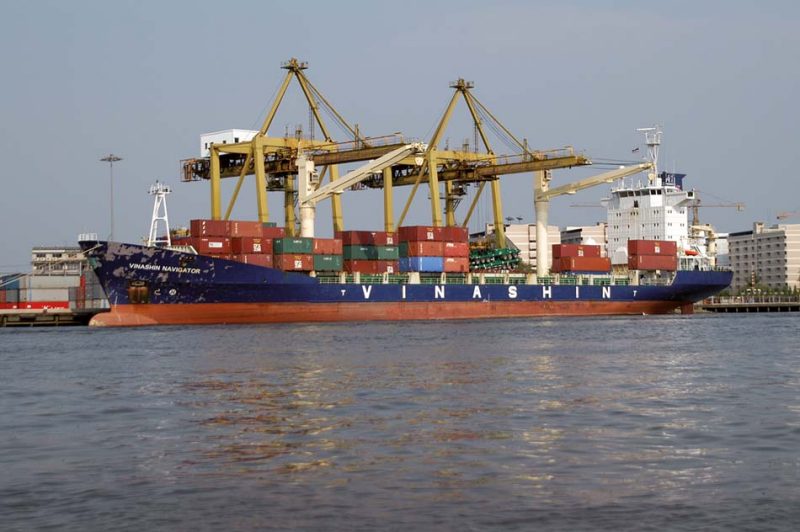
The city has an extensive canal system running through it and was very useful to the Port of Bangkok in the early days, with extensive boat services operating on the Chao Phraya river and the canals today. The fastest way of getting around in Bangkok, and the one with the best views, is by boat as the road system of the city is normally gridlocked. The city was founded on the east bank of the Chao Phraya river – the ‘River of Kings’ – as the ‘City of Angels’ and was designed to be negotiated by water, thus many of the large temples and monuments including the Grand Palace and Wat Arun have magnificent river facades.
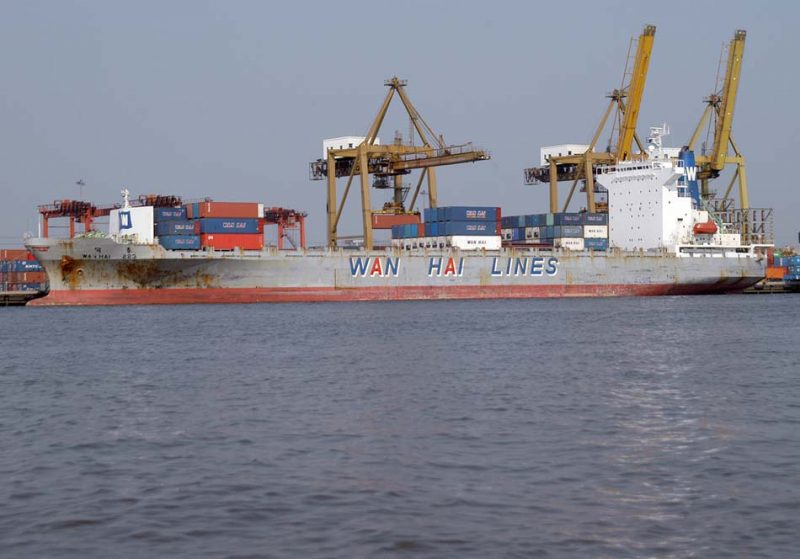
This network of Khlongs (canals) are fun to explore, especially in the traditional areas of the west bank or Thonburi district. The tourist river boats (known as ‘longtail’ boats) are extremely colourful with high prows and sterns. The economical ‘River Express’ service transports 50,000 tourists and commuters per day on 21 kilometres of canal from near Krung Thep Bridge in the south to Nonthaburi in the north, taking ninety minutes of fast transport. Convoys of tug pulled barges carrying rice, sugar, tapioca and other exports can be seen from these craft on the canals, destined for the Port of Bangkok at Khlong Toey. The beautiful Khlong Saen Saep canal runs east from Banglamphu to Sukhumvit and beyond with the water bus very busy daily with commuters, while the Thonburi canals visit atmospheric backwaters of the city where rickety wooden shacks rub shoulders with plush villas with posh waterside lawns.
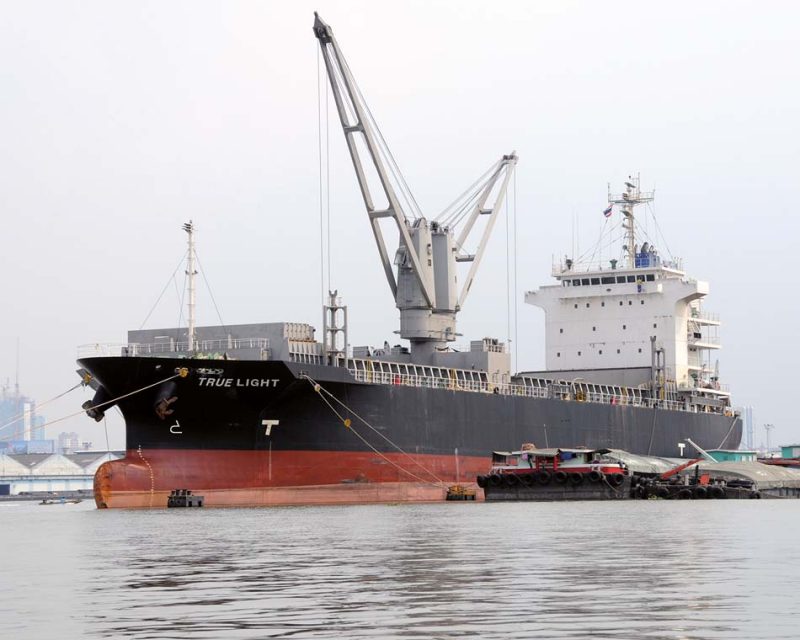
Beautiful colonial buildings and many glittering temples dominate the river, while upstream is the Bangyikan distillery, home of the fiery Bangkok Mekong brand whisky. The most modern of a dozen bridges crossing the river is the cable stayed Rama VIII Bridge, hanging asymmetrically from a single pylon erected on the Thonburi bank to comply with a law prohibiting tall structures within sight of the Grand Palace. There are three rapid transit rail systems named the BTS Skytrain, the underground Metro, and the elevated Airport Rail Link. The airport is located 25 kilometres to the east of Bangkok and is named Suvaarnabhuri Airport . Chinatown is an atmospheric district in southern Bangkok with warrens of alleys, lanes and tiny, narrow streets that cut through a mixture of shops, temples and restaurants. This district is best explored on foot, and part of its appeal is getting lost in a thriving neighbourhood that eventually leads one to the sight of the fabulous Golden Temple of Wat Phra Kaeo in the Grand Palace. There are 581 skyscrapers in Bangkok over three hundred feet in height, but there are also many slums in the city. One million people live in abject poverty in around 800 slum settlements, many of these are located near the Port of Bangkok in Khlong Toei District.
There are over forty Buddhist temples still in existence today in Bangkok and the old ruined city of Ayutthaya, which have served as religious centres, schools, hospitals and libraries and for other public uses.
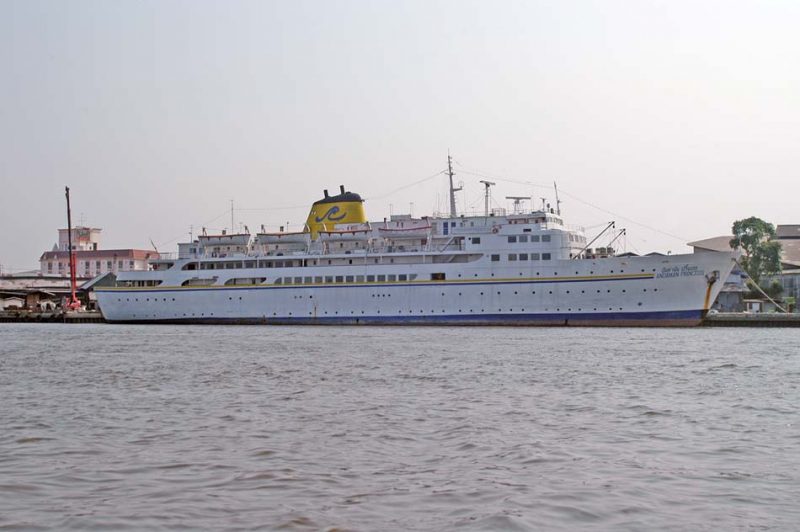
The Grand Palace is a large palace with extensive grounds on the edge of the east bank of the Chao Phraya river. The palace was opened in 1785 to mark the founding of a new Thai dynasty and the rebirth of the Thai nation in this new capital city. Burmese warriors had burnt and destroyed the old capital of Ayutthaya to the north of Bangkok in 1767. The old capital today is a grassy graveyard of temples, an hour by train north from Bangkok, whose heyday was from the 14th to the 18th centuries. Wat Phra Kaew in the Grand Palace holds the most holy religious Buddhist icon in Thailand, the fabulous Emerald Buddha. There is only one entrance through the two kilometres of crenelated walls of the Grand Palace, with its Inner Palace, and this is known as the Gate of Glorious Victory and stands on the north side of the palace. The palace site covers 25 hectares and is adjacent to Silpakorn University, although only a portion is open to tourists as the Inner Palace is strictly private for the use of the King, Rama X.
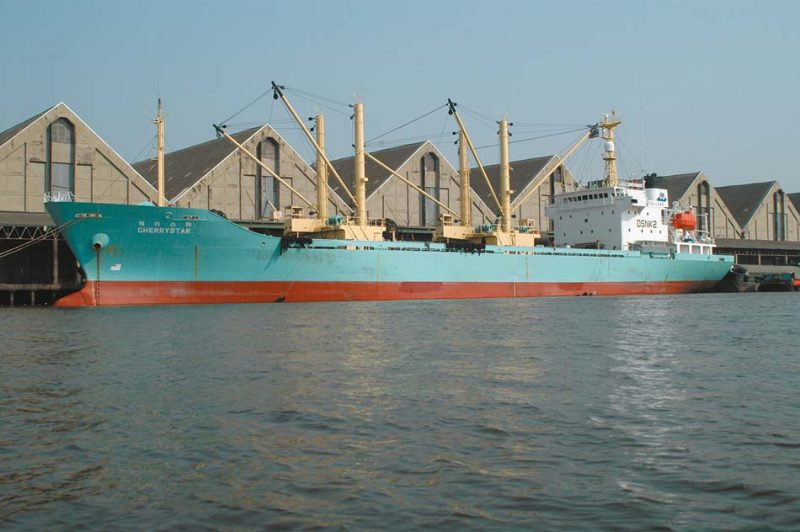
The King is the most respected man in Thailand, and he and his Queen live in the Grand Palace. The great courtyard of the palace is surrounded by historic buildings, including the Audience Hall, where the King dispenses justice, and a pavilion where he dismounts from his elephants. The ashes of bygone Rama Kings are housed within the adjacent temple of the Emerald Buddha, the most sacred religious place in Thailand.
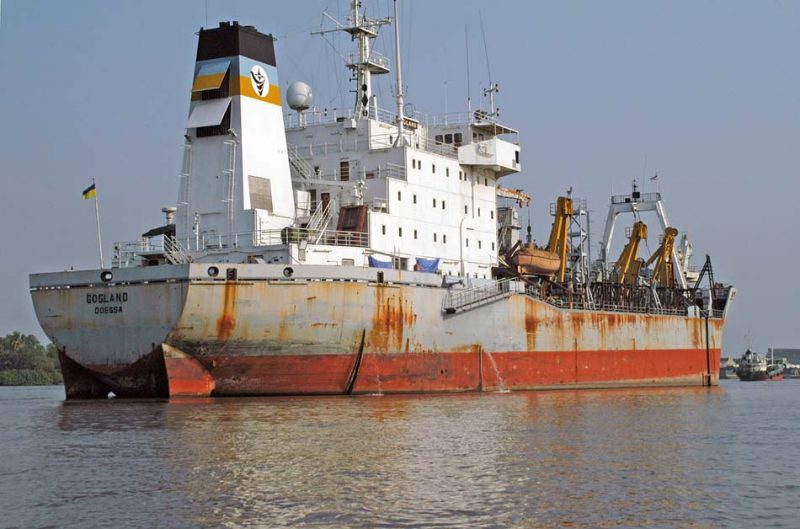
The Vimanek Palace is an elegant late 19th century three storey summer palace topped by a red roof with finials at each end. It was built using golden teakwood without the use of a single nail. This colourful ‘L shaped’ colonial era palace was built in 1868 by King Rama V on the tiny east coast island of Ko Sichang, but he had it transported lock, stock and barrel to the Dusit area of Bangkok in 1901.
The Erawan Shrine houses a four faced statue of Phra Phrom, the Thai representation of the Hindu god of creation, Lord Brahma. It was built in 1956 as part of the construction of the Government owned Erawan Hotel in central Bangkok near the Royal Bangkok Sports Club and Lumphini Park to eliminate the bad karma believed to have been caused by laying the foundations of the hotel on the wrong date leading to cost overruns, delays and mishaps. After the shrine had been completed, the completion of the Erawan Hotel proceeded without further incident or any mishaps.
Bangkok (Krung Thep in the Thai language) is the most visited city in the world with countless millions of tourists, but its rapid growth has come until recently without urban planning and regulation, resulting in a haphazard city without adequate infrastructure systems. The gridlocked road system has contributed massively to severe air pollution at times, and the city has had to turn to public transport to solve these problems. Five rapid transport rail lines are now in operation with more planned by the Bangkok Metropolitan Administration.
After the destruction of World War II had been repaired in the Port of Bangkok, the growth of the port in the 1950s was rapid with major exports of rice, maize, tapioca, rubber and tin and major imports of machinery, textiles, crude oil and manufactured goods. A feeder service with rice was operated by the small Benveg of 1,545 dwt of Ben Line from 1950, chartered from Galbraith, Pembroke and Co. Ltd. for use between Bangkok and Singapore and Port Swettenham. She was replaced a year later by the owned similar sized war built Empire Park and given the same name of Benveg. The Royal Thai Government considered building a new deepwater port in 1961, as the Port of Bangkok could only accommodate vessels up to 12,000 dwt. In 1979, Sattahip Commercial Port was opened 76 nautical miles south of the Port of Bangkok. The Port of Bangkok has since continued to grow with conventional break bulk cargoes that were formally handled on the West Quays, and have been handled on the East Quays since 1977 with container, breakbulk and bulk cargoes, as well as ro-ro traffic, now handled at the Port of Bangkok of up to twenty million tonnes per annum.
Port Of Bangkok Facilities
The Port of Bangkok handled 3,067 vessel calls during 2014, and 21.0 million tonnes of cargo, and over 1.5 million TEU of containers, a huge throughput for a port restricted by depth to smaller vessels of up to 12,000 dwt. The port had expanded from 12.845 million tonnes handled and 1.052 million TEU of containers handled in 1999, to 14.626 million tonnes handled and 1.174 million TEU of containers handled four years later.
Container Terminals
Container Terminals 1 and 2 are located on the East Quay, with containers handled by fourteen red painted gantry cranes. The total berthing distance of Terminal 1 is 2,231 feet with four berths (A, B, C and AB) for small container vessels up to 12,000 dwt as the alongside depth is 26.9 feet. The total berthing distance of Terminal 2 is 2,074 feet with four berths (D, E, F, and G) for small container ships of up to 12,000 dwt as the alongside depth is 26.2 feet. Container Terminal 1 has a 9.9 hectare marshalling yard and capacity for 6,840 TEU of containers, eight gantry cranes, 22 rubber tyred cranes, two reach stackers, two top loaders, and 53 tractor vehicles pulling low loaders. Container Terminal 2 has a 5.0 hectare marshalling yard and capacity for 6,357 TEU of containers and has 1,805 reefer plugs, six gantry cranes, a dozen rubber tyred cranes, one reach stacker, one top loader, and 45 tractor vehicles pulling low loaders. The two terminals have a total staff of 267 people and are open 24 hours, seven days a week.
Breakbulk and Bulk Terminals
These cargoes are handled at the West Quays, which have a total length of 20,200 feet with nine conventional berths and one berth for coastal passenger ship use. Alongside depth is up to 26.2 feet and there are two bonded warehouses. Coastal passenger ship berth (Berth 22A) is 565 feet in length, and the nine conventional berths are named 22B to 22J.
Ro-Ro Terminal
A ro-ro berth handles automobiles and wheeled vehicles of all kinds with two storage areas of total area of 3.6 acres. Port services includes compulsory pilotage, and the usual water, electricity and other services.
Bangkok Barge Terminal
This terminal lies on the west bank of the Chao Phraya river some twelve kilometres from the river mouth in the Gulf of Thailand. It was established as a joint venture by the shipping company Pacific International Lines (PIL) and Bangkok Modern Terminal Eastern Maritime (Thailand) Ltd. as a container port for deep sea vessels and which also receives barges of up to 120 tonnes from the upriver Port of Bangkok. The barge shuttle service is daily with each barge handling up to 44 TEUs, and the container terminal has a maximum container movement per hour of two dozen moves. The terminal was created to use the skills of the partners in deep sea shipping, export and import activities, management and the use of modern technology. In addition, there are also 128 other privately owned terminals on the Chao Phraya river operating in the chemicals/liquid bulk, rice, sugar, tapioca, automotive, fertiliser, coal and timber sectors.
Port Of Laem Chabang
The new deep water port of Laem Chabang was opened in 1991 with a multi-purpose terminal, and the Sattahip Commercial Port, 32 nautical miles south of Laem Chabang, was returned to the Royal Thai Navy. It expanded from 16.468 million tonnes handled and 1.756 million TEU of containers handled in 1999, to 28.740 million tonnes handled and 3.048 million TEU of containers handled four years later. The Port of Laem Chabang currently occupies 2,572 acres or 10.41 square kilometres, and received 6,312 vessel calls in 2014 handling 72.3 million tonnes of cargo and 7.1 million TEU of containers, and an increase of 4.2% over the previous year. By 1997, this new port had become the major port of Thailand, handling many millions of containers, as well as the first of many cruise ship calls per year, which today number over one hundred calls per annum.
The Port Authority of Thailand (PAT) runs the port, and had been founded by the Port Authority of Thailand Act of 1951 as an autonomous Government agency under the jurisdiction of the Ministry of Transport and Communications. In 1961, the Government realised a new port to take the overflow from the Port of Bangkok was needed, and thus Sattahip Port and the Port of Laem Chabang came into existence. The much smaller ports of Chiang Saen, Chaing Khong and Ranong also come under the jurisdiction of the PAT, but handle a total of only 460,000 tonnes per year. During Millennium year, the PAT was converted from a Government agency into a State owned corporation under the jurisdiction of the Ministry of Transport amended by the Port Authority of Thailand Act of 1951.
The decision to go ahead with the new port of Laem Chabang was only taken by the Thai Government in 1982, some twenty years after Dutch engineering consultants had recommended the site as a well sheltered location, with easy dredging, and an open area suitable for port construction. The engineering design was completed in 1986 and construction began in Autumn 1987, with private companies in the retail and tourism sectors invited to join two years later. The port began operating in 1991 and quickly became the biggest port in Thailand, with much of its international trade and tourism passing through the port. During 2007, the Thai Government approved the construction of modern fast rail links between the port and Bangkok, and the inland cities of Lat Krabang and Korat, as well as other cities in South East Asia.
The Port of Laem Chabang Industrial Estate Export Processing Zone covers a further 480 hectares with fifty industrial firms located here, and the Port of Laem Chabang Shipyard has been developed to build small ships to a high standard. The long term plan for the port is to link it by sea and air with regular services to other large container terminals in South East Asia. The Port of Laem Chabang is the largest exporter of tapioca and tapioca products in the world, with the Agribulk Terminal handling these important exports. The facilities of the new port are as follows:-
Container Terminals
Laem Chabang International Terminal Ltd.
Wharf A2 of length 400.0 metres with alongside depth of 14.0 metres and can accommodate Panamax and Post Panamax container ships and has a 30 year lease.
Wharf A3 of length 350.0 metres with alongside depth of 14.0 metres and is operated by Hutchison Ports.
Wharf B2 of length 300.0 metres with alongside depth of 14.0 metres and operated by Evergreen Containers on a 27 year lease.
Wharf B4 of length 300.0 metres with alongside depth of 14.0 metres and operated by the TIPS Company Ltd.
Wharf B5 of length 400.0 metres with alongside depth of 14.0 metres with a 30 year lease.
Wharf C1 (two berths) of length 700 metres and 500 metres with alongside depth of 16.0 metres and is operated by Hutchison Ports

Wharf C2 (two berths) of length 700 metres and 500 metres with alongside depth of 16.0 metres and is operated by Hutchison Ports.
Wharf C3 of length 500 metres with alongside depth of 16.0 metres and is operated by Hutchison Ports.
Navy Piers
Navy Pier B
Wharf B1 of length 300 metres with alongside depth of 14.0 metres is operated by LCB Container Terminals Ltd. under a 27 year lease. Wharves B2 and B3 of length 300 metres and alongside depth of 14.0 metres and are operated by Eastern Sea Laem Chabang International Terminal Ltd.
Navy Pier C
Wharves C1 and C2, each of length 500 metres with alongside depths of 14.0 metres are operated by Hutchison Ports for the import of 1.1 million automobiles and wheeled traffic per year.
Navy Pier D
Wharf D1 is of length 700 metres with alongside depth of 14.0 metres, while Wharves D2 and D3 are of length 500 metres with alongside depth of 14.0 l are operated by LCB Container Terminals Ltd. on 27 year leases.
Breakbulk, Bulk and Agribulks
Wharf A4 is of length 250 metres with alongside depth of 14.0 metres, and handles sugar and molasses imports from Port Louis at Mauritius and tapioca and tapioca products exports to a total of one million tonnes per year in Handysize bulkers of up 50,000 dwt. It is operated privately by the Limited Inventory of the Gulf of Thailand Ltd.
Ro-Ro Terminals
Wharf A5 of length 450 metres with alongside depth of 14.0 metres for the import of up to one million vehicles per year. It is operated by Mercer Co. Ltd.
Major container lines calling at Laem Chabang include Maersk Line, CSCL, CMA CGM, MOL, Nordana Line, MSC, OOCL, NYK, Evergreen Line, Sinotrans, KMTC Line, with chartered container ships from Navios, Schulte, Bright Line and other fleets. Many of the containers arriving at the port are destined for transhipping into smaller vessels to Bangkok and other Thai ports. One such example is the small deck container ship Blue Pailin of 4,375 dwt and built in 2007 in Indonesia and on charter to Maersk Line. She is of shallow draft to reach the Port of Bangkok with her bridge forward, and a container crane ‘midships. Bright Laem Chabang is the former Hanjin Laem Chabang, running on charter on a service from Korea, Japan, China, Hong Kong and Vietnam to Thailand. Feeder services operate to Kuantan (Malaysia) and Singapore, and deep sea container ships call from ports in Africa, the Americas and Europe.

Cruise Terminal
Wharf A is operated by a private company under a thirty year leasing contract. The pier is of length 590 metres and has the capacity to handle almost one million tonnes of cargo per year as well as handle over one hundred cruise calls per year. The cruise terminal is operated by Laem Chabang Cruz Centre Company Ltd. with its major user at Berth A1 being Star Cruises of Singapore. Star Cruises made their inaugural homeport season in Laem Chabang on 17th December 2017 using Superstar Gemini. She operated three cruises per week until 27th April 2018, with one three night cruise and two of two days length, all to Sihanoukville (Cambodia) and Ko Samui (Thialand).
The red flag of Thailand with a sun motif on a blue quarter is flown each day from the roof of the Cruise Terminal, which has good passenger facilities, and the calls during 2018 by the major cruise lines were as follows:-
- Star Cruises – 40
- Princess Cruises – 10
- Celebrity Cruises – 9
- Aida Cruises – 8
- Holland America Line – 6
- Tui Cruises – 6
- Regent Seven Seas/Oceania – 5
- Silversea Cruises – 4
- Royal Caribbean International – 3
- Norwegian Cruise Line – 3
- Viking Ocean Cruises – 3
- Azamara Cruises – 3
- Windstar Cruises – 1
- Seabourn Cruises – 1
- Cruise & Maritime Voyages – 1
- Mediterranean Shipping Co. – 1
- Mariella Cruises – 1
- TOTAL – 105
Thai Shipping Companies
The Thai Shipowners Association was formed in 1973 by three private shipping companies, the Transport, Commerce and Foreign Ministries of the Thai Government, and the Royal Thai Navy.
The shipping companies were the Thai Maritime Navigation Co. Ltd., the Thai Mercantile Marine Ltd. founded in 1967, and the Thai International Maritime Enterprises Ltd. The Thai Ocean Transportation Co. Ltd. imported crude oil in two Aframax tankers named Bangkok and Siam, while the coastal tankers of the Thai Petroleum Transport Co. Ltd. included four small tankers of 1,511 grt built by Smith’s Dock Co. Ltd. at South Bank on the Tees as Lannathai, Mahachai, Srivichai, and Traitreung in 1964. The Thai Maritime Navigation Co. Ltd. had purchased the five hold sisters Halifax City and Montreal City of 6,533 grt from Bristol City Line in 1972 and renamed them as Ratchaburi and Thonburi, Thonburi becoming Nakornthon in 1973. They had been built by the Burntisland yard during 1962/64 and were powered by a Rowan diesel engine built by the yard. Ratchaburi caught fire on 24th March 1973 while on a voyage from Bangkok to Japan with a cargo of jute and rubber and later sank, while Nakornthon served until she arrived at Bangkok for breaking up on 18th July 1986.
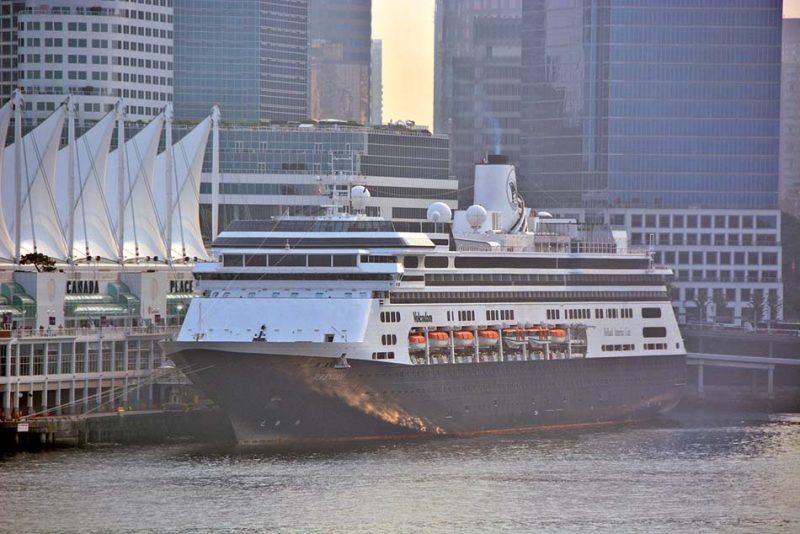
There were only 86 dry cargo ships registered under the Thai flag on 30th June 1983, however larger Thai owned shipping companies have since sprung up, including the United Thai Shipping Corporation (Unithai), Thoresen & Company (Bangkok) Ltd., and Precious Shipping PLC of Bangrak in Bangkok. The latter company was established in December 1989 and began operations in March 1991 using owned and chartered Handysize, Supramax and Panamax bulkers after obtaining approvals from the Bank of Thailand and the Board of Investment of Thailand. It was listed on the Bangkok Stock Exchange from 16th September 1993, and had a fleet of four dozen owned and chartered bulkers in 1998 with names ending in ‘Naree’ e.g. Waraleee Naree of 25,500 dwt, Kanok Naree of 16,076 dwt, Natcha Naree of 23,595 dwt, and Suchada Naree of 23,735 dwt. The current fleet is also one of four dozen modern bulkers of up to Panamax size all with names with the suffix of ‘Naree’ e.g. Ananya Naree.
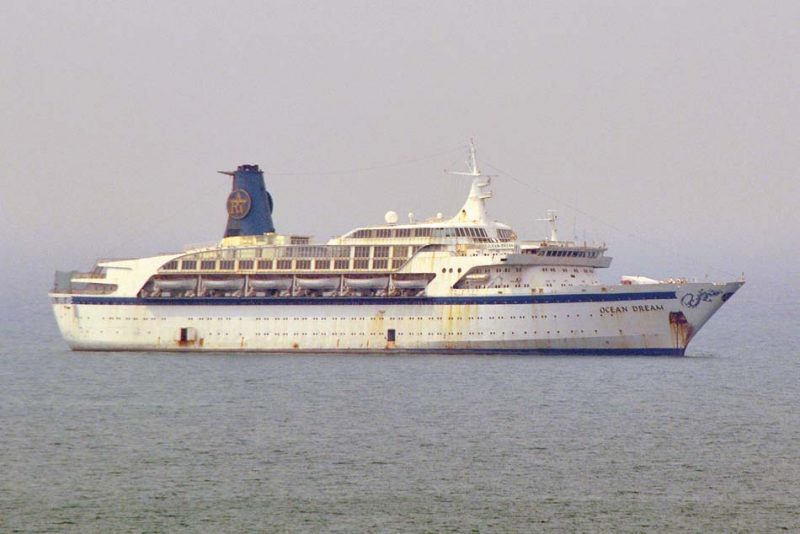
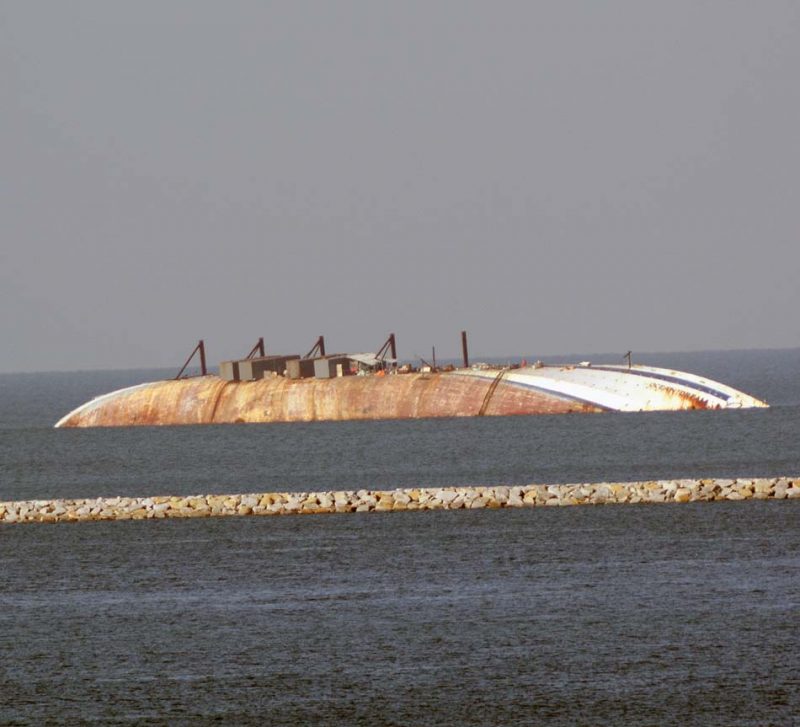
United Thai Shipping Corporation (Unithai Line PLC) was formed in 1976 to serve the Thai Government vision of founding a Thai national flag carrier and began Europe/S. E. Asia/U.S.A. conventional liner services. Services were expanded to South and West Africa, the Middle East and the Far East with owned general cargo ships such as Yala Navee of 19,350 dwt and built in 1976 by the Kurushima Dockyard at Onishi and purchased second hand in 1996 as Kota Jati from Pacific International Lines (PIL).
The United Shipyard and Engineering Ltd. (UTSE) was established in 1990 at Laem Chabang Port, with two floating docks for repair work, one for ships up to 50,000 dwt and the other for ships up to 140,000 dwt, and has also completed small general cargo ships of up to 3,000 grt.
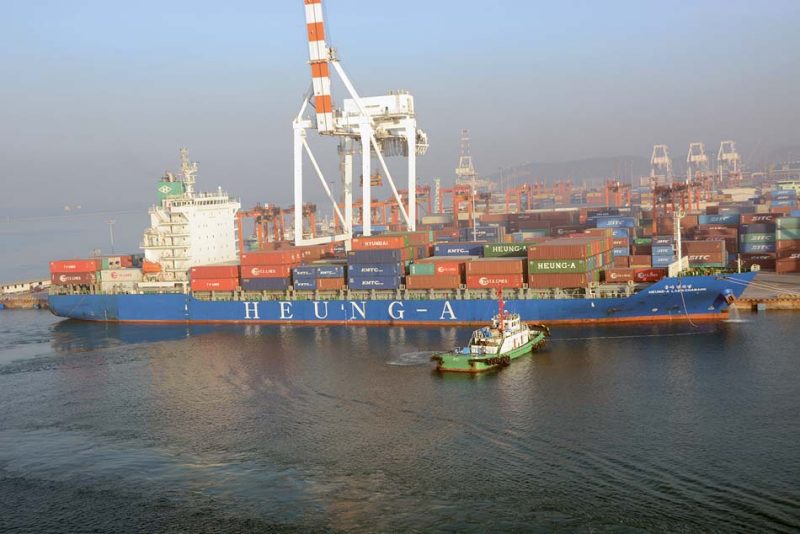
United Thai Logistics Co. Ltd. (UTLC) and United Thai Warehouse Co. Ltd. (UTWC) were formed as joint ventures in 1994. Unithai Container Terminal began operations in Samut Prakan province in 1997, and offshore companies had been formed by Millennium year. The ‘UniGear’ service joint venture with GearBulk of Norway began a South African service in 2001, with Panamax bulk carriers owned from a year later. Joint ventures have since been formed with Myanmar, Vietnam and Korean shipping companies. The Unithai logo of three seagulls in the red and blue colours of the Thai national flag represents worldwide services, both westwards and eastwards.

Thoresen & Company (Bangkok) Ltd. was established in Hong Kong in 1904 as a shipping agency for Norwegian shipping companies, with a branch office established in Bangkok in 1926. The agency work grew and their first owned ship, Hai Lee of 15,865 dwt, with their classic funnel colours of long, vertical blue and red stripes, was purchased in 1985 from Norwegian Asia Line, for liner services to Far East ports such as Yokohama and for the import of sugar cargoes from Port Louis in Mauritius.
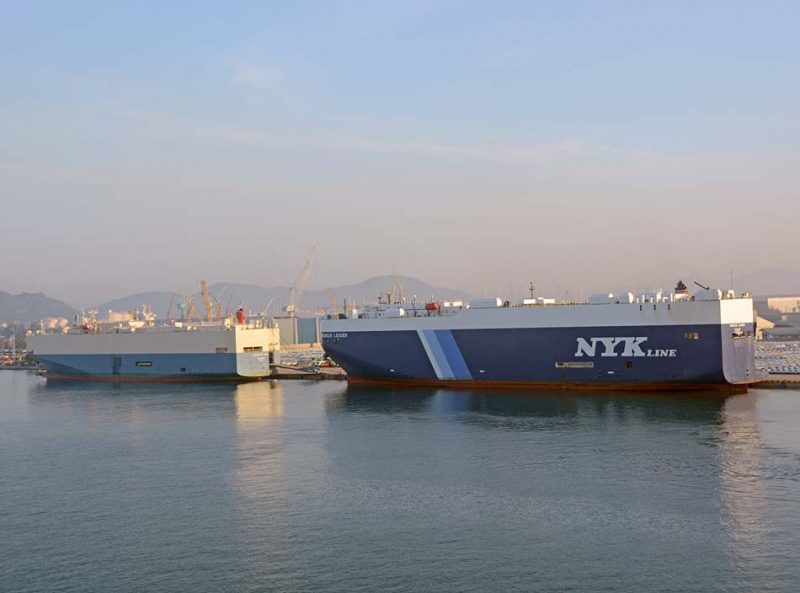
The owned fleet in 1998 was two dozen strong and included the multi-purpose sisters Thor Sailor, Thor Sea, Thor Skipper, Thor Sky, Thor Spirit, Thor Star and Thor Sun of 16,250 dwt, and expanded from 25 to 33 vessels in 2003 but was trimmed back to fifteen vessels in 2011, and currently the Thoresen fleet stands at seventeen owned bulkers of up to 58,780 dwt, six open hatch bulkers of up to 54,880 dwt, and forty bulkers on time charter.
Shipyards And Harbour Craft
The Government of Thailand has had many harbour craft completed over the last eighty years, including nine hopper dredgers and trailing suction dredgers named from Sandon 1 to Sandon 9 built between 1939 and 1999, the first six by Dutch shipyards, particularly the Gusto Werft yard, for use in the Port of Bangkok. The last three of trailing suction dredgers were built between 1989 and 1999 by Italthai Marine Co. Ltd. of Samut Prakan, a yard set up with Italian expertise. They are part of a yard output consisting of fishing trawlers, oil rig supply vessels, research and survey vessels and a Government Training Ship. This latter ship is Sakhon Wisai of 4,396 gt and 1,500 dwt and was completed in 2010 with a single hold forward, one eighteen tonne crane, and a service speed of fifteen knots from a four stroke seven cylinder M.A.N. – B & W diesel engine. She has a dark blue hull, black funnel, four red lifeboats and several decks of accommodation for trainees, with hull dimensions of length 90.0 metres and moulded beam of 16.8 metres.
Tugs and buoy lifters with names of Tarua followed by a numeral have included Tarua 1 built in 1950 to Tarua 12 built in 1981 by German and Singapore yards.
More recent examples of powerful shiphandling tugs for the Port of Laem Chabang have been built between 1986 and 2016, including some of up to 30 and 40 tonnes bollard pull as Tarua 112, Tarua 113, Tarua 114, Tarua 115, Tarua 116, Tarua 117, Tarua 118, Tarua 119, Tarua 120, Tarua 122 by Thai yards, with Tarua 203 Tarua 204, Tarua 205, Tarua 206 and Tarua 207 by Japanese yards. Tarua 301, Tarua 302 and Tarua 303 of this latest trio are of 55.7 tonnes bollard pull and 418 grt, and were completed by the Asian Marine Services yard at Phra Samut Chedi.
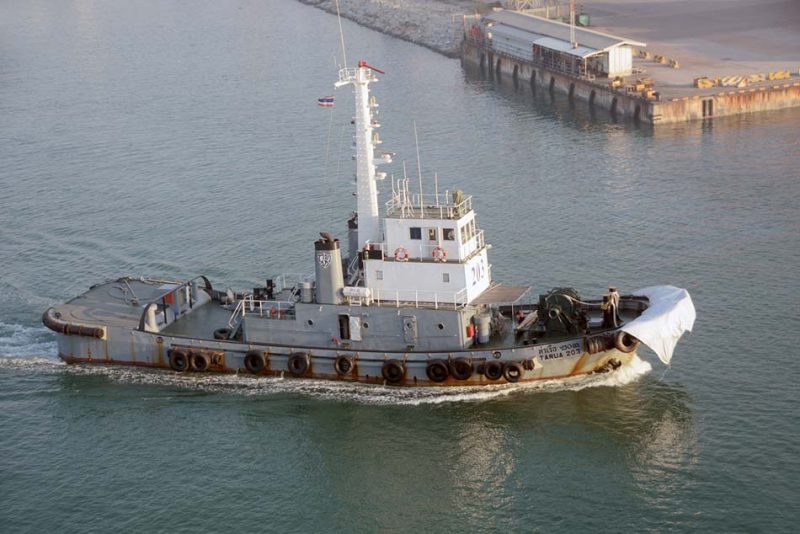
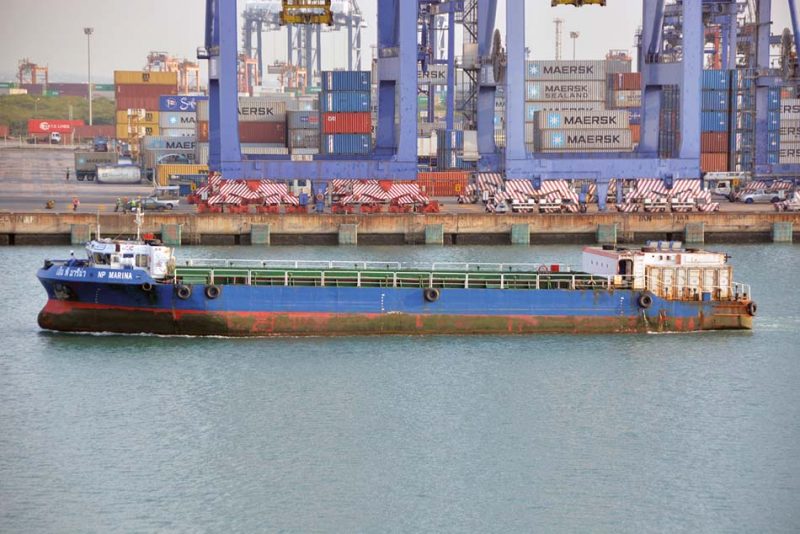
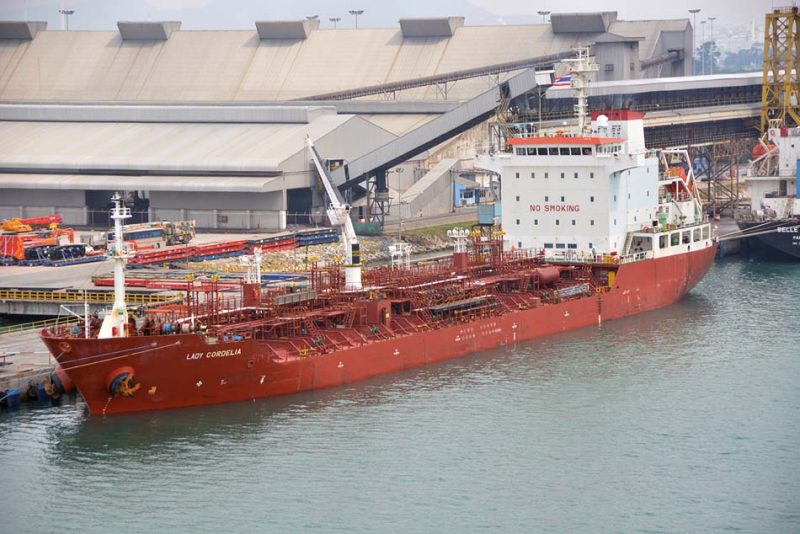
Postscript
The busy resort and fishing village of Pattaya on Pattaya Bay is around eighteen kilometres south of the Port of Laem Chabang. It first became popular as a rest and relaxation stop for American soldiers during the Vietnam War, but has since developed into a family oriented holiday resort. There is a tourist ferry service five times daily, popular with tourists, running from the Bali Hai Pier in Pattaya to the nearby island of Koh Lan, seven kilometres offshore. The Port of Laem Chabang is one of the busiest container ports in the world, and easily the busiest port in Thailand. The Port of Bangkok is heavily restricted by the depth of the Chao Phraya river only allowing vessels of up to 12,000 dwt, but is still busy today with trade to and from Bangkok. The local population of over eight million people, and the beach resort of Pattaya are augmented by many millions of tourists each year.

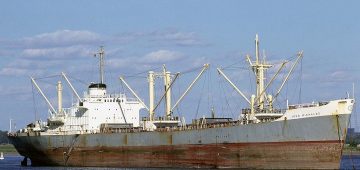



Comments
Sorry, comments are closed for this item